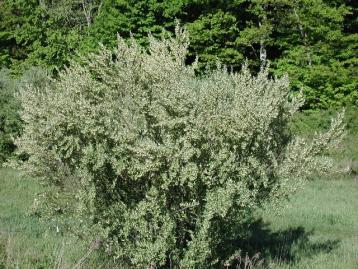Lending a Hand to a Land Trust

My first week on the job was spent with the Southeast Land Trust of New Hampshire working with Phil Auger, their Property Manager. His job requires traveling to and maintaining all of the land trust’s 19 properties. This involves identifying and eradicating invasive plant species, creating and maintaining trails for public use, planning and assisting in other stewardship projects specific to each property, and interacting with adjacent landowners.
So, what is a land trust? While there are variations to this definition, a land trust is an organization that seeks to conserve areas— especially woodland, farmland, and shoreline — for ecological and natural resource values. A land trust accomplishes this either by assuming full ownership of a property or by acquiring a conservation easement where a property owner and an organization (such as a land trust or government) sign a legal contract that restricts development on a piece of land.
Properties owned outright ("fee-owned") by the land trust must be maintained. This is where I come in.
Each day, I traveled all over Rockingham County with Phil to work on different land trust properties. One of the top priorities was invasive species control. The biggest offender seemed to be autumn olive, an invasive shrub that crowds and out-competes native species. On each property, we brought out the clippers and saws to kill or hinder the growth of autumn olive shrubs.

An unfortunate reality was collecting litter from a couple sites. Because the properties are open to the public for hiking and snowshoeing, some people also see them as prime dumping grounds for trash. Luckily, with a little detective work, we were able to find receipts in the pile and identify the litterer.
We also marked boundary lines and posted signs. I learned and utilized skills in surveying to find property boundaries and take bearings.
One of my favorite parts of the week was learning the trees of New Hampshire. As licensed forester, Phil knew all the trees. He taught and quizzed me on the different species we encountered on the wooded properties. I am now well-prepared for my dendrology course this coming fall semester!
My week with the Southeast Land Trust was busy and educational. I now have a deeper understanding of easements and land trusts, a working knowledge of both native and invasive plant species in southeast New Hampshire, and a farmer’s tan as proof of a great week spent outdoors!
Next week, I switch gears and begin working with the UNH Cooperative Extension to band common terns on the Isles of Shoals. Be sure to check back to hear all about it!


